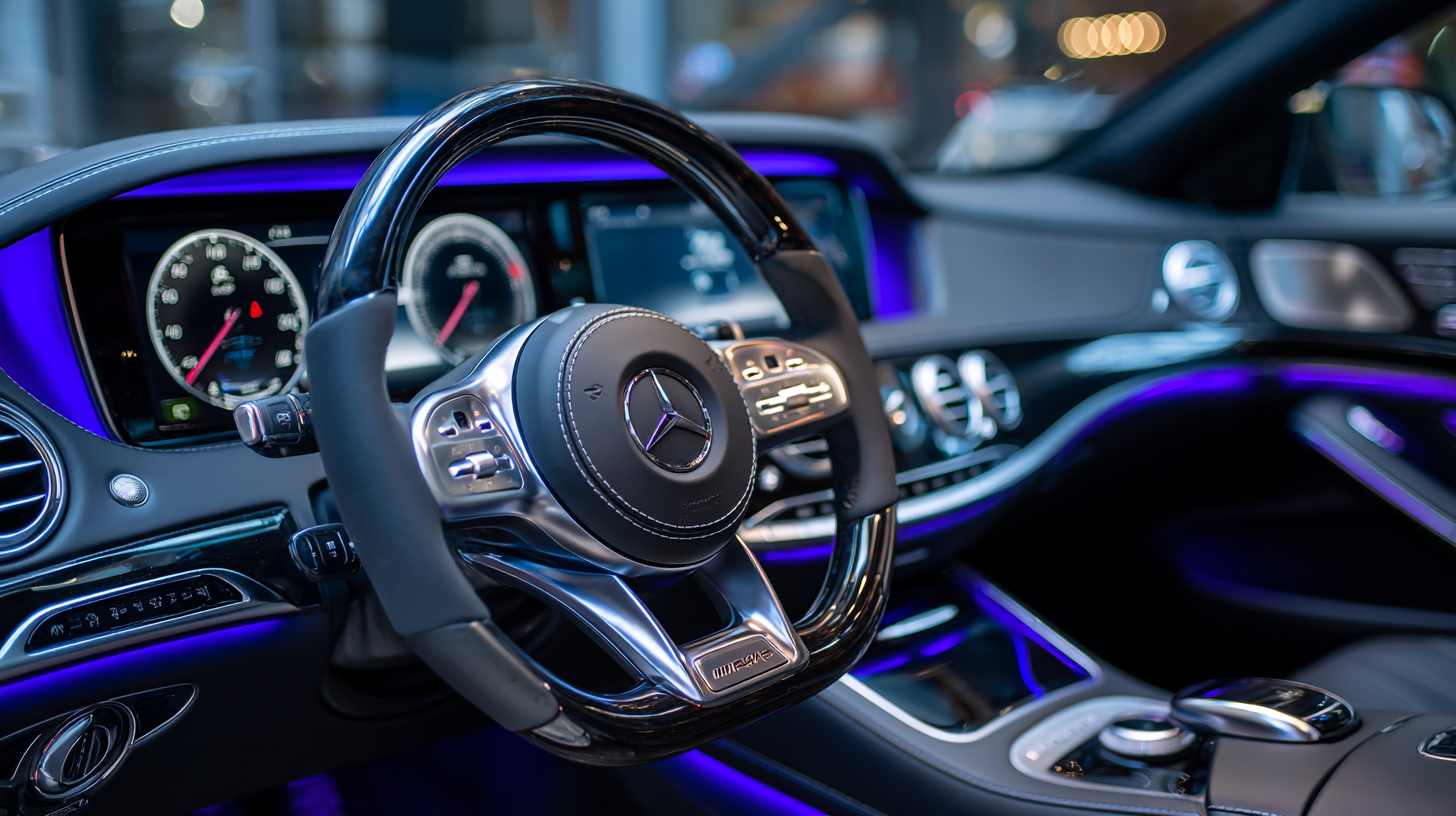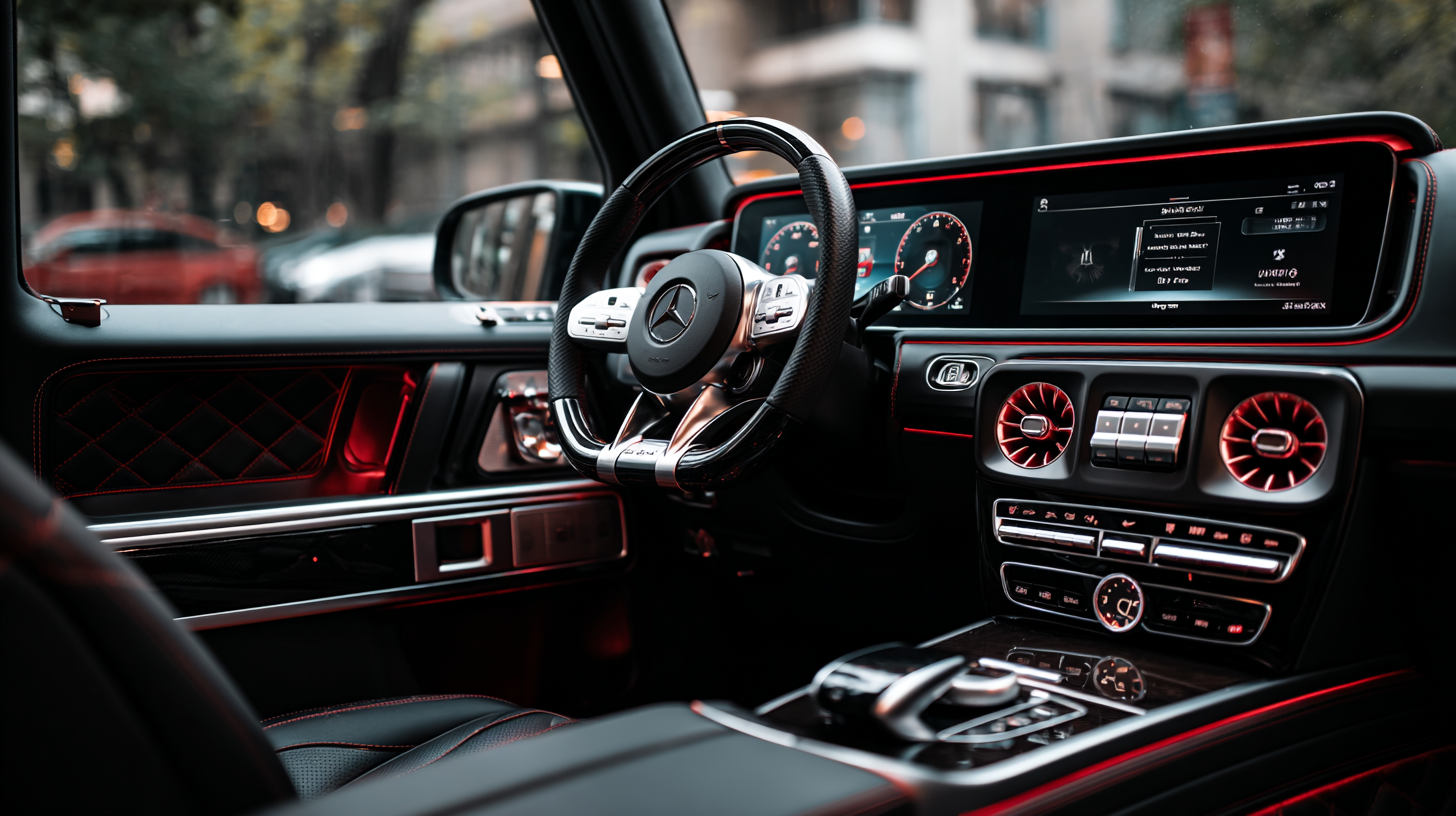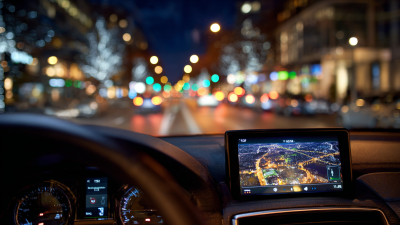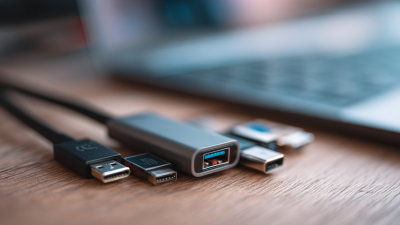How to Choose the Best Car Reader for Your Vehicle Needs
When it comes to vehicle maintenance and diagnostics, choosing the right car reader is crucial for ensuring optimal performance and longevity of your automobile. According to a report by MarketsandMarkets, the automotive diagnostic scan tool market is projected to reach $36.1 billion by 2026, highlighting the increasing importance of these tools for both professional mechanics and DIY enthusiasts. A car reader not only helps in identifying issues within the vehicle's systems but can also provide valuable insights into performance metrics and potential future problems.

With the variety of options available on the market, from basic OBD-II scanners to advanced diagnostic tools with extensive features, selecting the best car reader tailored to your specific vehicle and needs can be overwhelming. This guide aims to streamline the selection process, helping you make an informed decision that best suits your automotive requirements.
Factors to Consider When Selecting a Car Reader for Your Vehicle
When selecting a car reader for your vehicle needs, it's essential to consider various factors to ensure you choose the best option for your specific requirements. One of the primary considerations is compatibility; the reader must be compatible with your car's make and model. According to recent industry reports, many vehicle manufacturers are integrating advanced onboard diagnostics (OBD) systems, making it crucial to verify that the reader supports the right protocols. Features like Bluetooth connectivity for mobile device integration can enhance usability, allowing easy access to diagnostics while driving.
Another important factor is the range of functionalities offered by the car reader. Some models provide basic diagnostic functions, while more advanced readers can offer detailed insights into engine performance, fuel efficiency, and even emissions testing. Recent studies indicate that automotive troubles often stem from underlying diagnostic issues, making a reader with comprehensive capabilities invaluable for proactive vehicle maintenance. Additionally, consider the updates and support offered by the manufacturer, as technology evolves rapidly, and keeping your tool current can help maximize its effectiveness for future automotive trends.
Understanding Different Types of Car Readers: Pros and Cons
When selecting a car reader, it's essential to understand the various types available, each with its unique pros and cons. The most common types include OBD-II scanners, which are designed to read diagnostic trouble codes, and advanced diagnostic tools that offer in-depth vehicle analysis. According to a report by MarketsandMarkets, the global market for automotive diagnostic tools is projected to reach $36.5 billion by 2025, reflecting the increasing reliance on technology for vehicle maintenance and repair.
OBD-II scanners are popular due to their ease of use and affordability, making them suitable for everyday motorists. Their primary advantage is that they provide essential diagnostic information, allowing users to quickly identify issues. However, their limitations emerge when dealing with complex vehicle systems—many OBD-II scanners do not support advanced diagnostics or European vehicles, where proprietary codes may be required. On the other hand, advanced diagnostic tools offer comprehensive vehicles’ insights but come at a higher price point and may require more technical knowledge to operate effectively. Understanding these distinctions is critical for vehicle owners seeking the right diagnostic solutions to meet their specific needs.
Car Reader Types: Pros and Cons
This chart illustrates the ease of use ratings for different types of car readers, on a scale from 1 to 10. OBD-II scanners and Bluetooth adapters are the easiest to use, while GPS trackers require more expertise.
Essential Features to Look for in a Car Reader
When selecting the best car reader for your vehicle needs, it's crucial to consider several essential features that can enhance your diagnostics and overall driving experience. Firstly, compatibility is key; a good car reader should support a wide range of vehicle makes and models. According to a report by MarketsandMarkets, the automotive diagnostic tool market is projected to reach $45.2 billion by 2025, highlighting the increasing demand for versatile diagnostic tools. A car reader that can access multiple protocols and systems will save both time and effort during troubleshooting.
Another vital feature to look for is the availability of real-time data and live vehicle tracking. Advanced car readers allow users to monitor engine parameters and performance metrics, enabling proactive maintenance and reducing the likelihood of costly repairs. A survey by Statista shows that approximately 70% of vehicle owners are more likely to invest in tools that provide real-time insights into their vehicle’s performance. In addition, features such as Bluetooth connectivity and mobile app integration can enhance usability, providing a seamless experience for tech-savvy drivers. These functionalities ensure that vehicle owners can receive updates and alerts directly on their smartphones, promoting a smarter approach to vehicle management.

Compatibility and Connectivity: Ensuring It Works with Your Vehicle
When selecting the best car reader for your vehicle needs, compatibility and connectivity are critical factors to consider. According to a recent industry report by MarketsandMarkets, the global automotive diagnostic tools market is expected to reach $38.8 billion by 2026, driven largely by the increasing complexity of vehicle systems and the growing demand for enhanced vehicle safety. This highlights the necessity for a car reader that can seamlessly integrate with a wide range of vehicle makes and models.
To ensure compatibility, it's vital to check if the car reader supports both OBD-II and proprietary protocols, as many modern vehicles incorporate advanced diagnostics that go beyond standard OBD-II codes. Furthermore, connectivity options—such as Bluetooth, Wi-Fi, or a wired USB connection—play an essential role in user experience. A report from Statista indicates that 47% of consumers prefer wireless connectivity for their automotive gadgets, enabling them to access real-time data and perform diagnostics directly from their smartphones or tablets. Choosing a car reader that not only matches your vehicle's compatibility but also offers intuitive connectivity features will enhance your vehicle maintenance routine significantly.
How to Choose the Best Car Reader for Your Vehicle Needs - Compatibility and Connectivity: Ensuring It Works with Your Vehicle
| Car Reader Model | Compatible Vehicle Types | Connectivity Options | Diagnostic Functionality | Price Range |
|---|---|---|---|---|
| Model A | Sedans, SUVs | Bluetooth, USB | Basic OBD-II Scan | $50 - $70 |
| Model B | Trucks, Vans | Wi-Fi, USB | Advanced Diagnostics | $100 - $150 |
| Model C | Luxury Cars, Hybrids | Bluetooth, NFC | Full-System Diagnostics | $200 - $300 |
| Model D | Compact Cars, SUVs | Wi-Fi, Bluetooth | Emission Testing | $75 - $110 |
| Model E | All Vehicles | USB | Live Data Monitoring | $120 - $170 |
Budgeting for Your Car Reader: Finding Value for Your Needs
When budgeting for a car reader, it's crucial to find value that aligns with your specific vehicle needs. Experts suggest that car owners should consider allocated expenses carefully; typically, it is advisable to spend no more than 20% of your post-tax monthly income on any vehicle-related costs. This principle can also guide your investment in a car reader, ensuring that you choose a model that not only fits your financial plans but also offers the functionality and features you require.

As for value, the market for accessories like car readers has grown, with options available across a broad price range. A recent report indicated that consumers can find efficient models starting from as low as 50% less than premium alternatives. This means there are quality options that won’t break the bank, providing essential features without unnecessary expenditure.
Prioritize what features matter most to you—be it Bluetooth connectivity, navigation capabilities, or compatibility with vehicle models, and then match it with a price that fits your budget. By carefully assessing both your financial constraints and the available offerings, you can confidently select the best car reader for your vehicle's needs.
Related Posts
-

How to Choose the Best Car Reader for Your Vehicle Needs
-

Mastering Your Card Reader Step by Step Guide for Beginners
-

10 Best IT Vending Machines Transforming Workspaces in 2023
-

Ultimate Guide to Maximizing Profits with Snack and Drink Vending Machines
-

5 Essential Tips for Finding the Best Vending Machine Locations Worldwide
-

How to Choose the Right Card Reader for Your Needs
